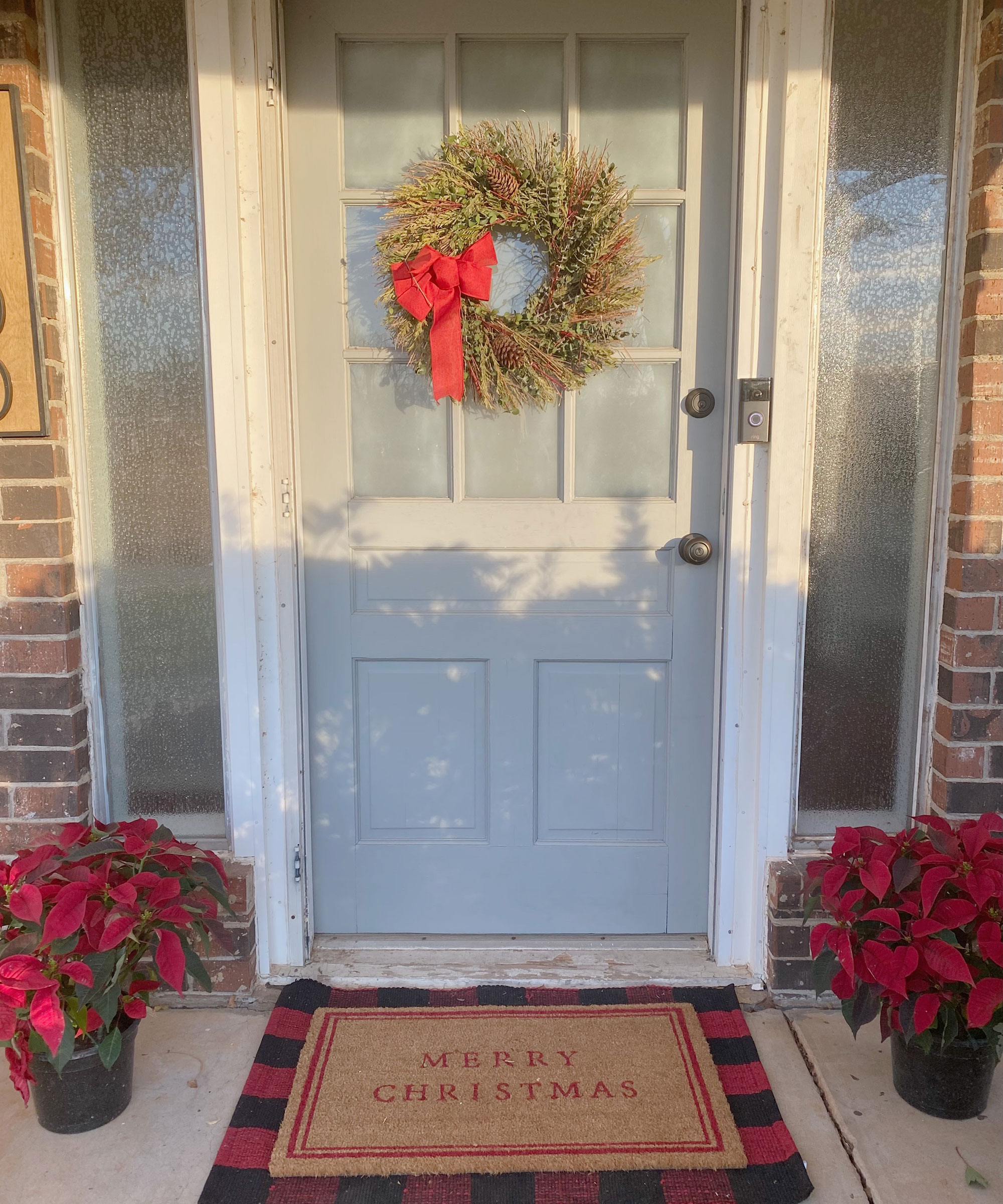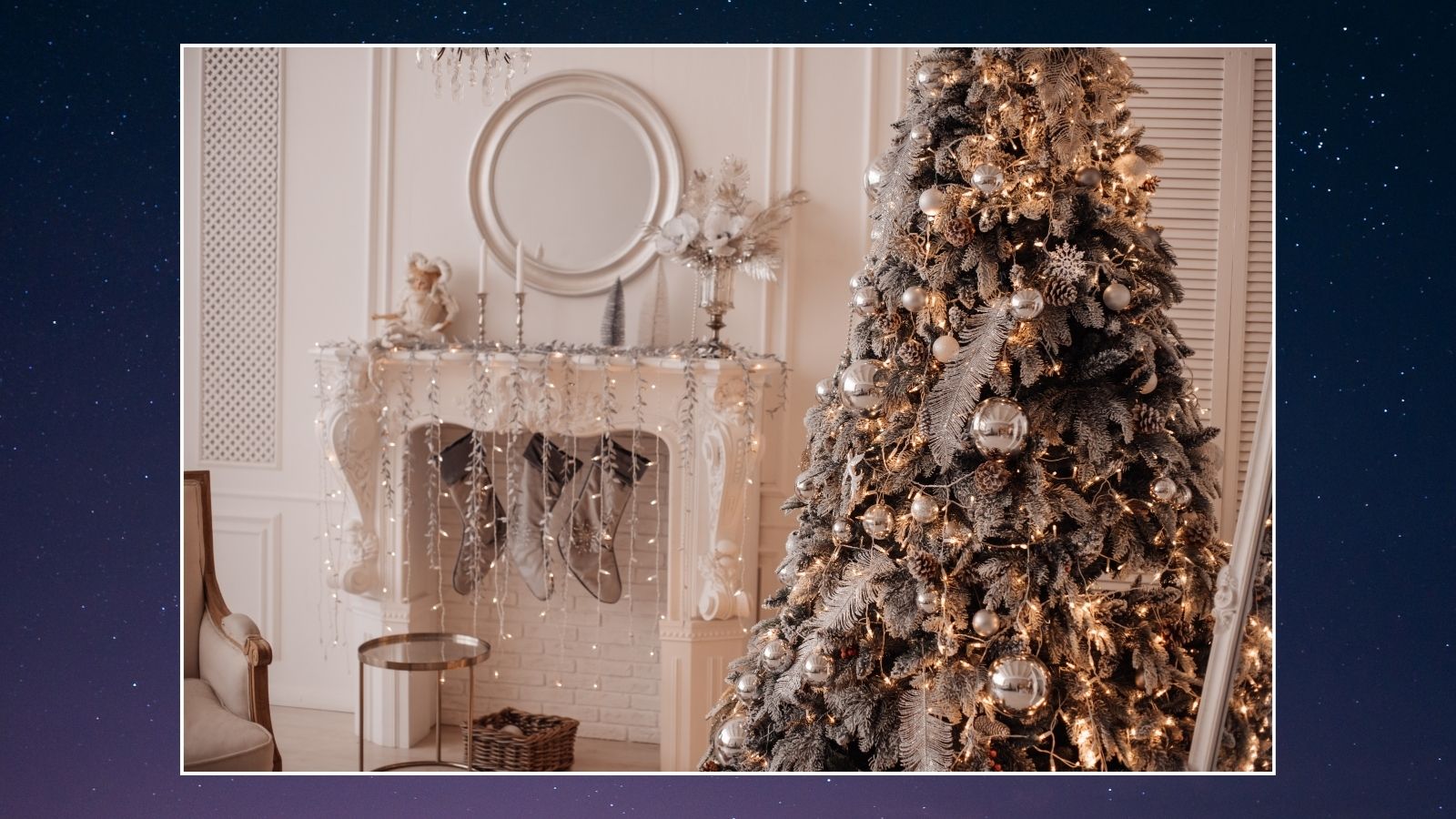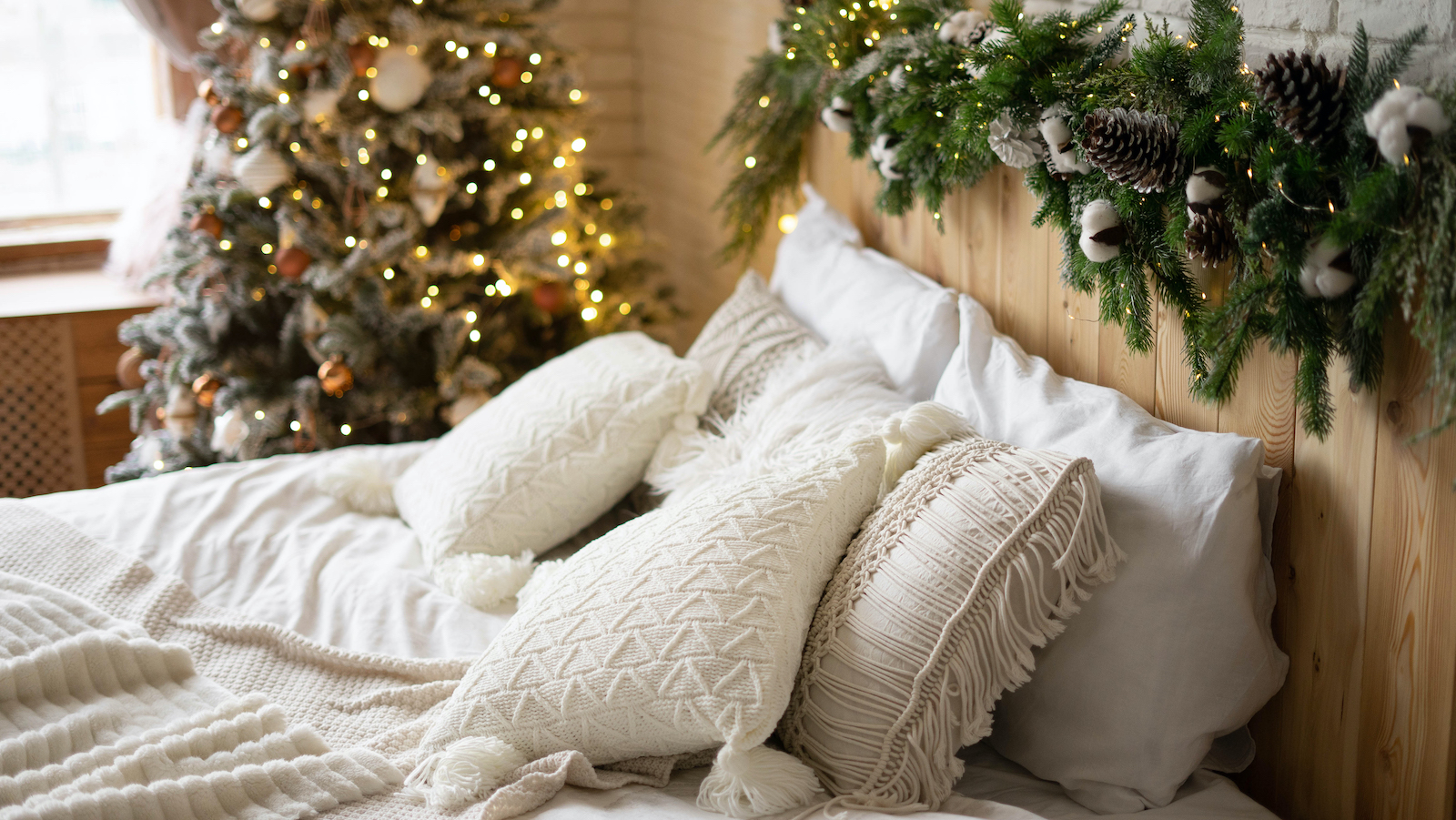

Whether red or white, poinsettia plants are a favorite Christmas floral and, caring for poinsettia plants is easily done, that is, when you know what you're doing. Get the right amount of light, the correct temperature and soil and you'll enjoy this flower in true bloom throughout the holidays, until next Christmas too.
This plant actually originates from the dry forests of Central America, which have a very different climate to the winters in the Northern Hemisphere. Which is why many of us struggle with poinsettia leaf curl and drop through not necessarily negligence, but simply misunderstanding this stunning Christmas plant. Care for your poinsettia properly and it'll be the easiest way to uplift your Christmas decor year after year.

How do you take care of a poinsettia indoors?
Dori Turner, resident blogger at Real Homes and Farmhouse home decor guru says 'Caring for a poinsettia indoors isn’t difficult. Make sure you give poinsettias lots of indirect light – natural sunlight through a window is best. Keep them away from drafts and heat vents, which can dry out the plant.
Water poinsettias thoroughly when the soil looks dry, about once per week. Use warm water so you don't shock the roots by shocking temperature changes. Fertilize poinsettias once a month with a balanced houseplant fertilizer.'

Poinsettia plants also make gorgeous and simple Christmas porch additions. Here's how to care for your poinsettia plants properly:
1. Choose a healthy plant
The reason why many poinsettias die almost as soon as they are gifted for Christmas is because they were kept in inappropriate conditions where they were sold. Supermarkets often display poinsettias right next to the entrance, which means these delicate tropical plants get blasted with cold draughts all day; by the time they've been bought, they've already begun dying.
This is why buying yours from a plant nursery or garden centre will pay off: it will have been kept properly by plant specialists.
2. Sun vs shade
Poinsettias like a lot of light – but only during the day and as mentioned, indirect light is crucial. These plants are used to bright, sunny days and pitch-black nights, so, for best results, place it on a bright windowsill during the day, and then put it away into a dark cupboard for the night (at least 12 hours is recommended). Too much electric lighting and insufficient darkness at night is confusing for this plant.
Turner adds, 'Poinsettias need at least 6 hours of indirect sunlight. If you are growing them indoors, you’ll want to place them near a sunny window. If you are growing them outdoors, place them in a location where they will receive a lot of sunlight.
If you place your poinsettia near a window that gets intense afternoon sun or on an east-facing windowsill, the plant may experience sunburn, which shows as brown leaf tips and spots. On the other hand, if your poinsettia is in the shade it may begin to wilt. It’s important to find a place with a good balance for your poinsettia to thrive.'
3. Keep poinsettias at a constant temperature
This is true when caring for most tropical house plants, and poinsettias are no exception: they like a constant, warm-but-not hot temperature, with no sudden fluctuations. That rules out placing them next to windows that are often opened, as well as next to sources of heat. Even having the leaves of the plant touch an overly cold window pane can make them ill. The ideal temperature for them is around 18 to 20ºC, so a bright spot in a living room or bedroom is best.
4. Water every couple of days
It's important to let your poinsettia dry out completely between waterings; at the same time, if the root of the plant dries out, it will die. What this means in practice is watering a little every couple of days. Make sure the plant does not stand in water. You can also try the root-watering method: drench the root of the plant in water, then replace in its pot when the water's drained completely.
5. Encourage poinsettias to bloom again
It's perfectly fine to compost your poinsettia after the festive season, but it is a perennial, and, with proper care, will flower again next year. The main things to know about poinsettia care throughout the year is that they like being outside during the summer, and that you will need to keep it in complete darkness (while still occasionally watering) between mid-October and mid-November. Other than that, just follow the tips above, and you should have a healthy plant that will delight again and again.
Poinsettia problems: the causes of Poinsettia leaf drop and curling
By far the most common problem with poinsettias is leaves curling up and falling off. This is usually quite simply due to underwatering; so, if your poinsettia is wilting, and the leaves are curling up, just water it. Watering poinsettias often is a good strategy, but don't let them stand in water – always grow them in pots with drainage holes.
The other common reason for poinsettias wilting and shrivelling up is fluctuating room temperature. Poinsettias do not tolerate large temperature differences, so never put them next to draughty windows, or windows that are often opened to air the room. They'll be much happier in a sheltered position with a constant temperature.
In rare cases, poinsettias can get fungal diseases and pests such as mealy bugs. If you notice white or brown marks on leaves, you can try to rescue the poinsettia by giving it a shower with very mild soap.

What do you do with a poinsettia after it blooms?
'After your poinsettia blooms, continue to water it when the soil starts to look dry, about once a week or so. Add fertilizer once a month to keep the blooms going and the plant healthy.' Recommends Turner.
Are poinsettias toxic to pets?
Fortunately, poinsettias do not pose any serious risk to pets. The milky sap contained in their stems is an irritant, and is likely to cause drooling and vomiting in cats and dogs, but it certainly won't kill or seriously harm your pet.

How do you care for a poinsettia after Christmas?
'Most people get rid of poinsettias after the Christmas season, but did you know you can care for them year round?'
In order to have a poinsettia year round you need to have the plant in a pot that has holes on the bottom for water to get out of it. You should put some stones or rocks at the bottom of your pot so that the roots can breathe.
If you choose to keep your poinsettia in the pot then it should be watered about once a week. You need to make sure that the soil gets dry before you water it again. Use fertilizer once a month to keep it blooming.
If you choose to plant your poinsettia in the ground then you should wait until all danger of frost is over in your area and plant it at a depth that is twice its height. It will need to be watered about twice a week and need full sunlight to flower. Fertilize it with a high-phosphorus fertilizer about once a month to help it meet its full potential. '
Join our newsletter
Get small space home decor ideas, celeb inspiration, DIY tips and more, straight to your inbox!
Anna is a professional writer with many years of experience. She has a passion for contemporary home decor and gardening. She covers a range of topics, from practical advice to interior and garden design.
-
 How to host Christmas in a small space —7 tips from design pros
How to host Christmas in a small space —7 tips from design prosWe asked designers how to host Christmas in a small space, and they've mapped it all out with these 7 fabulous tips
By Danielle Valente
-
 This TikTok Christmas tree hack is perfect for small space dwellers
This TikTok Christmas tree hack is perfect for small space dwellersWe spoke to crafter Emma Villaneda about her TikTok Christmas tree hack and how to do it
By Danielle Valente
-
 Yikes! A sleep psychologist reveals the Christmas lights to avoid if you want some shut-eye
Yikes! A sleep psychologist reveals the Christmas lights to avoid if you want some shut-eyeA sleep psychologist reveals the best and worst Christmas lights for sleep and how to adjust accordingly
By Danielle Valente
-
 6 cottagecore Christmas decorating ideas that will give you the warm and fuzzies
6 cottagecore Christmas decorating ideas that will give you the warm and fuzziesOur edit of Cottagecore Christmas decorating ideas will show you how to cozy up your space for the holidays
By Danielle Valente
-
 4 white Christmas decor ideas and how to style them to perfection this holiday season
4 white Christmas decor ideas and how to style them to perfection this holiday seasonOur edit of white Christmas decor ideas — and tips from interior designers — will make you ditch the red and green
By Danielle Valente
-
 How to decorate for Christmas according to your star sign — let the cosmos help find your holiday style
How to decorate for Christmas according to your star sign — let the cosmos help find your holiday styleWe spoke to the experts about how to decorate for Christmas according to your star sign
By Danielle Valente
-
 5 renter-friendly Christmas decorating ideas that are perfect but not permanent — here's how to style them
5 renter-friendly Christmas decorating ideas that are perfect but not permanent — here's how to style themRenter-friendly Christmas decorating ideas that you'll love and your landlord will appreciate
By Danielle Valente
-
 How to decorate a small bedroom for Christmas — five clever ways to add a festive feel to your sleep space
How to decorate a small bedroom for Christmas — five clever ways to add a festive feel to your sleep spaceOur edit reveals how to decorate a small bedroom for Christmas so that your space is festive and cozy
By Danielle Valente